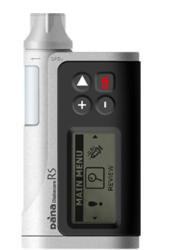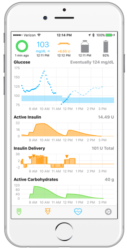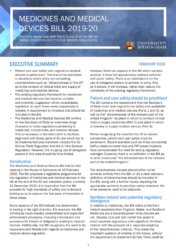In this post we sketch out different parts of the ‘looping’ ecosystem and start to consider the issue of liability if something should go wrong. In a series of posts, we have been looking at the use of DIY Artificial Pancreas Systems (DIY APS or ‘looping’). These systems – made up of an insulin pump, … Continue reading “The DIY artificial pancreas: Who is liable if something goes wrong?”
Blog
DIY Artificial Pancreas Systems: Safety concerns and potential risks in perspective?
In this post we explore some of the risks and benefits of DIY Artificial Pancreas technologies. In future posts we will take a look at the law, ethics, and policy implications of these. In a previous post we explained how Do-it-Yourself Artificial Pancreas Systems (DIY APS) are systems made up of four interconnected components: a continuous … Continue reading “DIY Artificial Pancreas Systems: Safety concerns and potential risks in perspective?”
Patients are doing it for themselves: DIY artificial pancreas systems and the challenge for doctors
Some people with type 1 diabetes (T1D) find current treatment options to be inadequate and unsatisfactory and have taken it upon themselves to design technological solutions which work for them. Tired of waiting for commercial solutions that meet their needs, patients are constructing their own Do-it-Yourself Artificial Pancreas Systems (DIY APS). Although still confined to … Continue reading “Patients are doing it for themselves: DIY artificial pancreas systems and the challenge for doctors”
Briefing note: How we can improve the Medicines and Medical Devices Bill?
Currently, a large part of the UK’s regulatory regime governing medicines and medical devices is derived from EU law. The Medicines and Medical Devices Bill (MMDB) 2019-20 sets out a suite of provisions for the regulation of medicines and medical devices in the UK at the end of the EU exit transition period, currently 31 … Continue reading “Briefing note: How we can improve the Medicines and Medical Devices Bill?”
Introducing Everyday Cyborgs 2.0
As technology increasingly blurs the boundaries between the biological and the synthetic, law struggles to keep up Increasing numbers of people worldwide rely on medical devices to help them to function. These devices range from the relatively simple, like hip replacements and aesthetic prostheses, to the complex, such as insulin pumps, pacemakers, and the total … Continue reading “Introducing Everyday Cyborgs 2.0”




